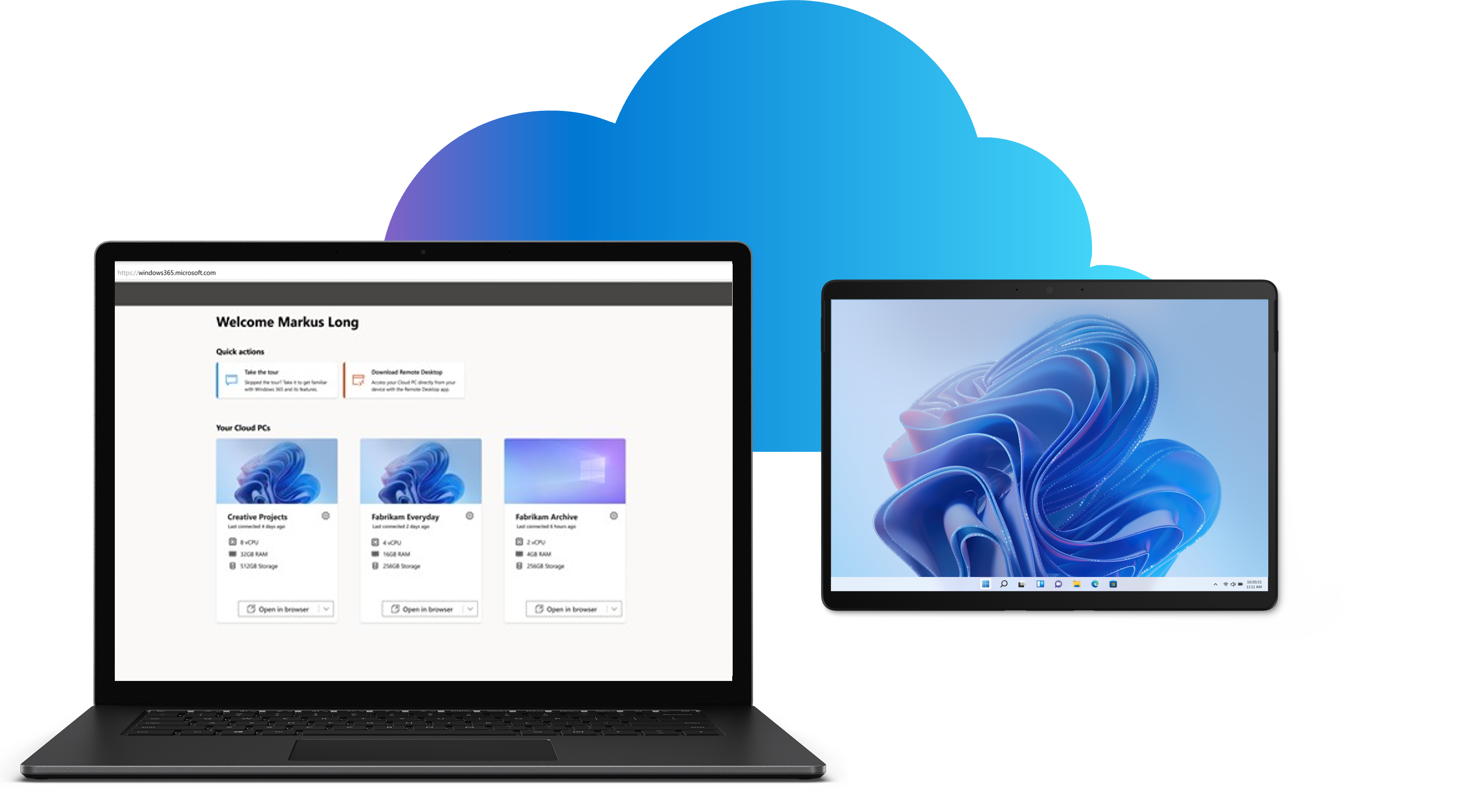Compare the differences of Windows 365 and Azure Virtual Desktop
As organizations move towards remote work, cloud-based solutions such as Windows 365 and Azure Virtual Desktop (AVD) have become powerful tools for improving productivity and granting remote access to applications and data. Windows 365 and AVD services are both virtual desktop solutions, also known as Desktop-as-a-Service. Both these solutions allow you to experience Microsoft’s client operating system (OS), Windows.
Windows 11 is the current version and is built on the same foundation as Windows 10 but offers further enhancements such as universal search, accessibility features, desktop personalization, PC and phone syncing and much more. One enhancement that will be available for Windows 11 editions is Microsoft Copilot in Windows, a centralized AI assistant. You can ask Copilot in Windows a range of questions, to rewrite, summarize, explain content, or help personalize your PC to get more done across all your apps and more. Windows 365 and AVD allow your end users to experience all these features of Windows from anywhere with internet connection and a compatible device. While these solutions offer similar functionality there are some differences. Lets dive deeper into each solution.
Important
The information on Microsoft Copilot in Windows only applies to the Windows Insider Preview Dev Channel. Details are subject to change. If you are interested in joining the Windows Insider Program, learn how the program works here: The Windows Insider Program (microsoft.com).
To learn more about Windows and its features, see Experience the Power of Windows 11 OS, Computers, & Apps | Microsoft.
Windows 365
Windows 365 is a cloud-based service that automatically creates a new type of Windows virtual machine (VM), known as Cloud PCs, for your end users. Windows 365 introduces a new way to experience Windows client to organizations of all sizes. Securely stream the full Windows experience including apps, data, and settings, from the Microsoft cloud to any personal or corporate device.
Note
A virtual machine (VM) is a virtual computer or software-defined computer with a physical server, existing only as code. To learn more about what a virtual machine is, see What Is a Virtual Machine and How Does It Work | Microsoft Azure.
Here's what you can do with Windows 365:
- Stream your apps, data, content, and settings from the Microsoft cloud to any device and pick up where you left off.
- Personalized Windows 365 Cloud PCs available across devices.
- Dedicated to a single user.
- Simple to deploy and manage from a single console.
- Easily set up and scale Cloud PCs to fit your needs and securely support changing workforce needs and new business scenarios.
- Assign a license to a user and Windows 365 is automatically provisioned for that user.
- Azure computing and storage are managed by Microsoft with a fixed cost.
Windows 365 is available in two editions: Windows 365 Business and Windows 365 Enterprise. To learn more about these editions, see Compare Windows 365 Business and Enterprise. To learn more about the requirements for Windows 365, see Windows 365 requirements | Microsoft Learn.

Azure Virtual Desktop
Azure Virtual Desktop (AVD) is a modern and secure desktop and app virtualization solution that runs on the cloud. AVD allows users to connect to a Windows desktop running in the cloud. It's the only solution that delivers multi-session on Windows. AVD gives you the ability to access your desktop and applications from virtually anywhere.
Here's what you can do with Azure Virtual Desktop:
- Set up a multi-session Windows Client deployment that delivers a full Windows experience with scalability.
- Dedicated to a single user or used by multiple users, using FSLogix technology.
- Present Microsoft 365 Apps for Enterprise and optimize it to run in multi-user virtual scenarios.
- Bring your existing Remote Desktop Services (RDS) and Windows Server desktops and apps to any computer.
- Virtualize both desktops and apps.
- Manage desktops and apps from different Windows and Windows Server operating systems with a unified management experience.
- Azure computing and storage are customer managed with consumption-based costs.
Note
Azure Virtual Desktop on Surface lets you run Virtual Desktop Infrastructure (VDI) on a Surface device. AVD on Surface blurs the lines between the local desktop experience and the virtual desktop, where touch, pen, ink, and biometric authentication span both physical and virtual environments. To learn more, see Azure Virtual Desktop on Surface.
To help you choose the right option for your hybrid work needs, see Windows 365 Cloud PC and Azure Virtual Desktop.